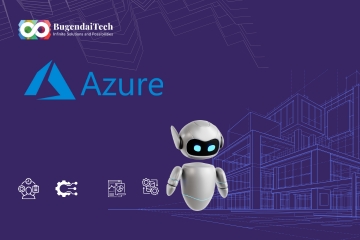In the world of data analytics, the importance of storytelling cannot be ignored. Data, when presented effectively, has the power to transform business strategies, drive innovation, and foster informed decision-making. However, raw data alone often fails to capture the imagination or convey the insights necessary for action.
This is where dynamic data storytelling, through narrative-driven dashboards, comes into play. By weaving a narrative around data, we can enhance user engagement and make complex information more accessible and compelling.
The Essence of Data Storytelling
At its core, data storytelling is about creating a narrative that guides the audience through the data. It’s not just about presenting numbers and charts, but about explaining what those numbers mean and why they matter.
A good data story highlights key insights, provides context, and helps the audience understand the implications of the data. It transforms abstract data points into a coherent and engaging narrative that can inform and inspire action.
The Evolution of Dashboards
Traditional dashboards, while functional, often fall short in terms of user engagement. They present a static view of data, leaving users to interpret and find meaning on their own. This can be a daunting task, especially for those who may not have a background in data analysis.
Narrative-driven dashboards, on the other hand, incorporate elements of storytelling to guide users through the data in a more intuitive and engaging way.
Elements of a Narrative-driven Dashboard
Contextual Information
Providing context is crucial. This can include background information, definitions, and explanations of why certain data points are important. Context helps users understand the relevance of the data and how it relates to their specific needs or questions.
Structured Flow
A narrative-driven dashboard should have a clear and logical structure. This might involve a chronological flow, where the story progresses over time, or a thematic flow, where different aspects of the data are explored in turn. The key is to guide the user through the data in a way that is easy to follow and understand.
Interactive Elements
Interactivity is a powerful tool for engagement. By allowing users to explore the data themselves, you can foster a deeper level of engagement and understanding. This might include interactive charts, filters, and drill-down capabilities that let users dive deeper into specific areas of interest.
Visual Storytelling
Visuals are a crucial component of any data story. This includes not only charts and graphs but also images, icons, and other visual elements that can help to illustrate the story and make it more engaging. Effective use of color, layout, and design can also help to highlight key insights and guide the user's attention.
Narrative Annotations
Adding narrative annotations to the dashboard can help to highlight key points and provide additional explanations. This might include text boxes, callouts, or even audio or video clips that provide commentary on the data.
What are the benefits of narrative-driven dashboards?
Enhanced User Engagement
By making the data more accessible and engaging, narrative-driven dashboards can help to capture and hold the user's attention. This can lead to a deeper level of engagement and a greater willingness to explore and interact with the data.
Improved Understanding
By providing context and guiding the user through the data, narrative-driven dashboards can help to improve understanding and make complex information more accessible. This can be particularly important for users who may not have a background in data analysis.
Actionable Insights
By highlighting key insights and providing a clear narrative, narrative-driven dashboards can help to drive informed decision-making. Users are more likely to understand the data's implications and act based on the insights provided.
How do you implement narrative-driven dashboards?
Implementing narrative-driven dashboards requires a thoughtful approach and a combination of skills, including data analysis, design, and storytelling. Here are some key steps to get started:
Define the Audience
Understanding the needs and preferences of your audience is crucial. This will help you to tailor the narrative and the design of the dashboard to meet their specific needs.
Identify Key Insights
Determine the key insights that you want to convey and build the narrative around these points. Focus on the most important and relevant information that will help to drive decision-making.
Design the Dashboard
Design the dashboard with the narrative in mind. Use visuals and interactive elements to guide the user through the story and highlight key points. Keep the design clean and intuitive to enhance usability.
Test and Iterate
Test the dashboard with users and gather feedback. Use this feedback to make improvements and iterate on the design and narrative.
Conclusion
Dynamic data storytelling through narrative-driven dashboards represents a significant evolution in the way we present and interact with data. By combining the power of storytelling with the capabilities of modern dashboard technology, we can create more engaging, accessible, and actionable data experiences.
As businesses continue to rely on data to drive decision-making, the ability to effectively communicate insights through compelling narratives will be a key differentiator. Embrace the power of narrative-driven dashboards and transform your data into a story that inspires and informs.






Comments